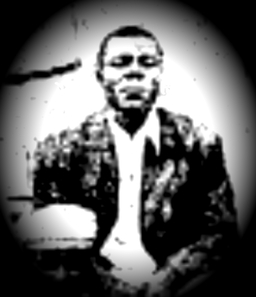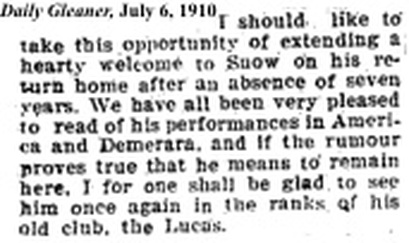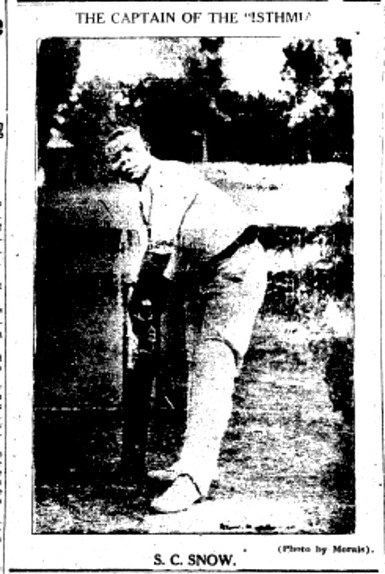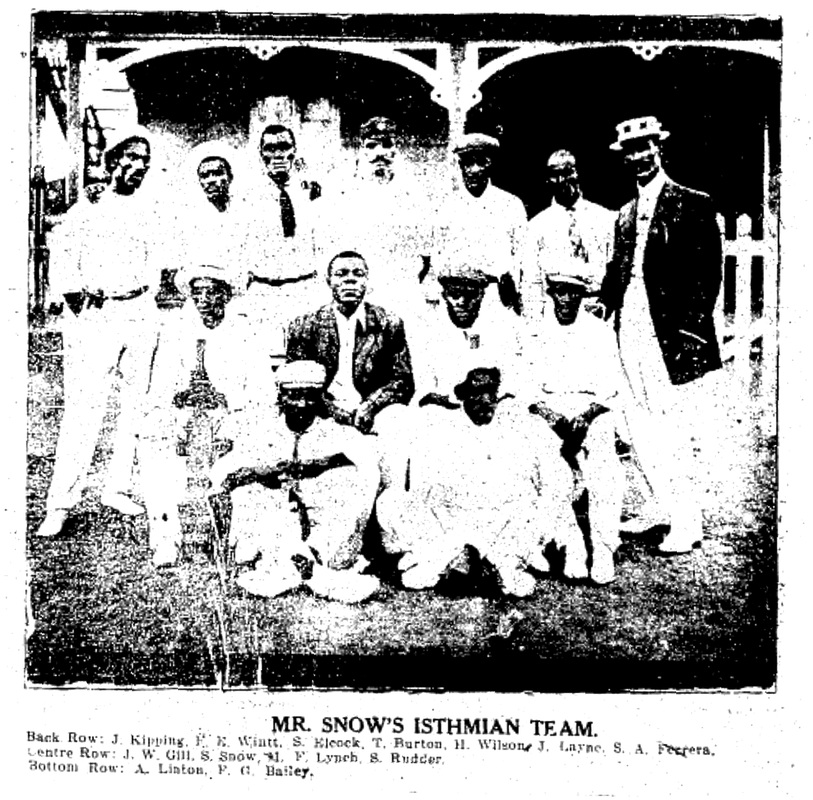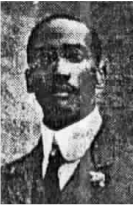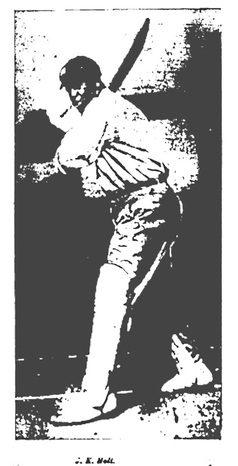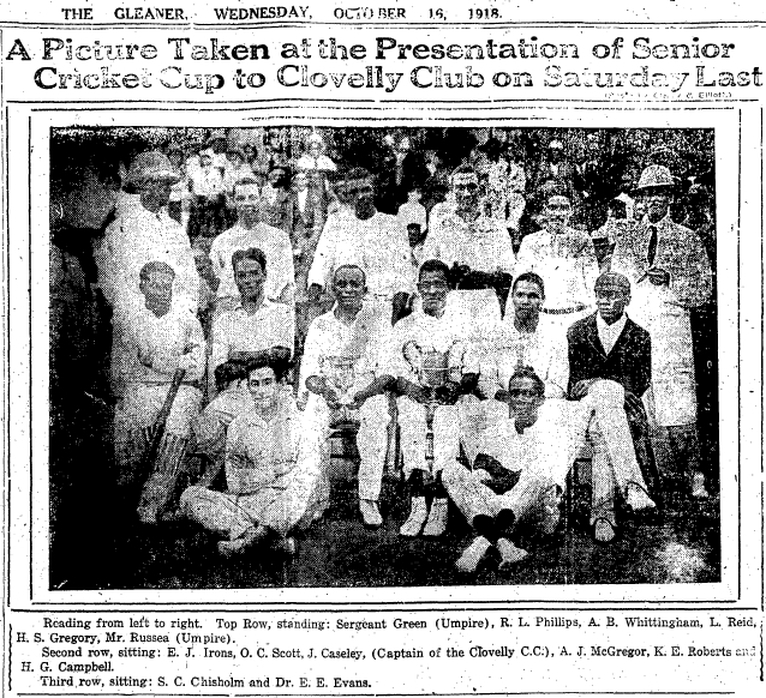It is not entirely certain where Samuel C Snow was born. One source claims he was born in British Guiana in 1880, but Jamaican sources claim he was born in Jamaica, about the same time; it seems fairly certain that his father was Austin Snow, of Regent Street, Allman Town, a sergeant in the 1st Battalion of the West India Regiment. His name is first mentioned in the press in 1898 playing on an All Jamaica team against Kensington Cricket Club. He made a duck in the first innings and 2 in the second, but he did take two Kensington wickets. This was not an impressive start to a career in cricket, and there is no reference to the club he played for, or why he was picked.
His name appeared again three years later; then he featured as a valued player for the Lucas Cricket Club until 1904. Years later he said that he had been associated with Lucas ‘from his earliest days of cricket’. In 1902 he played on All Jamaica and Jamaica Born teams against R A Bennett’s visiting English team, and earned a fine reputation for courageous batting. As a young player he also had a reputation for being a crowd favourite for his amusing behaviour both when batting and bowling, though later he became more serious. By mid-1904 he had left the island, first playing cricket in New York, and then later in British Guiana. Beyond references to his appearances for that colony in cricket, little mention of Snow appeared in Jamaican newspapers until early 1910, when he was in Panama. In April that year Snow made a remarkable suggestion – that he should bring a team from the Isthmus to play against Jamaican teams – and after consideration the Jamaica Cricket Council agreed to the proposal for an Isthmian team to visit Jamaica in July.
|
The visit of Snow’s Isthmian team was the highlight of the summer of 1910; a souvenir score-book was published for the tour. The team arrived on July 1 and practised at the nets at Sabina in the afternoon, watched by an interested crowd. The first match started next day at Sabina. A writer in the Gleaner welcomed Snow back; there were rumours that he intended to stay in Jamaica, and the writer, who had followed his career during his years away, hoped he would return to his old club, Lucas.
|
The Isthmians did not distinguish themselves in the first match, which Jamaica won by an innings and ten runs. They were entertained at a concert by the Jamaica Choir at Rockfort Gardens on July 4. The next match in Port Antonio on July 7, against a Northside team, went better for the visitors, in spite of rain, and they won by 75 runs. After that it was all down hill for the visitors; St Catherine beat them by 73 runs, in the second ‘Test’ against an All Jamaica team, they were defeated by an innings and 147 runs, and Jamaica’s ‘Next Twelve’ gave them another beating. But it was clear that the tour had been much enjoyed by all and Melbourne C C put on a ‘smoker’ for the Isthmians the night before they left on July 15. Snow did stay in Jamaica, and did return to his old club.
1911 saw the visit of an MCC team to the West Indies early in the year. Three matches were played in Jamaica; the first two, in which Snow played, were drawn. Snow then stood as an umpire in the third match which produced a remarkable and perhaps questionable result. In an atmosphere of growing excitement, Jamaica needed two runs to win with the last pair at the wicket. The other umpire, Lockwood, who was very unpopular, called the over after 5 balls or one ball short, and Scott, who was a very weak batsman was now facing the bowling. Snow then called the first ball of the new over a 'no ball' - later to become famous as the 'Snow ball' - thus tying the match. Two balls later the unfortunate Scott was caught and Jamaica missed out on what would have been a notable victory against the great MCC.
Clearly S C Snow had to have a means of earning a living in Jamaica; it is not clear what he did between 1910 and 1914, but in 1915-6 he was running a dry cleaning business at 65 Harbour Street, just opposite the Myrtle Bank Hotel; he had been living at that address at least from 1913. There was a flurry of advertisements during those two years, pointing out the necessity of such services, especially in wartime. Snow gave his qualification for the work as a Diploma of Merit from the Perth Dye Works in Scotland; Pullars of Perth, the biggest dry cleaning operation in Britain had its headquarters at the Perth Dye Works. This qualification was presumably obtained while living in Britain at some time between 1904 and 1910, when he was away from the island.
He remained on Harbour Street for some years. In January 1917 an important meeting of the Lucas Club was held there and later that year it was designated as one of the places where young men could sign up to join the army. In 1919 Snow was promoting the Lucas Athletic and Cycle Meet at Wilson Park on Empire Day, Monday 26th May; those wishing to compete could obtain entry forms at 65 Harbour Street or Dr Phillips’ Dispensary at 8 East Parade. In 1920 he was one of a group who attempted to set up a movie theatre company, promoted from his Harbour Street address. The proposed company was called the Black Star Motion Picture Theatre and Vaudeville Company, and among its objects were ‘to carry on a general Theatre business for the social, economic, and industrial uplift of the Negro race’ and ‘to utilise local talents as much as possible in its theatricals for the benefit of the race.’ In spite of the name and objectives of the company none of its board appear to have had any direct connection with the U N I A.
In 1920 his father, Austin Snow, died at his home on Regent Street in Allman Town, mourned by his wife, son and daughters.
In July 1920, Snow cut all connection with Lucas, bitterly hurt by what he felt were aspersions on his honesty as an umpire when chosen to stand in a match in which Lucas was one of the teams. In an angry letter to the Gleaner he pointed to all his services to the Club, and queried what in his record could have led the Lucas captain to object to him as umpire. After leaving Lucas, Snow continued to be connected with Clovelly C C for several years, but by 1924 he had left his location on Harbour Street.
He
apparently left the island, and there is only a brief mention of him
playing cricket in Cuba until the news of his death in Venezuela, after a
brief illness, was reported in early October 1930. The report claimed
that he was born in Jamaica, and was survived by his wife, Anita, three
children, two sisters and other relatives here. The ‘fabulous Sam Snow’
was no more.
